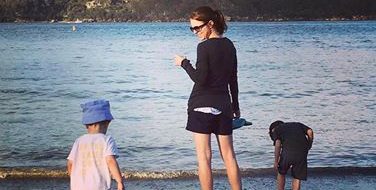I’ve been reading a lot about brain integration lately, and if this topic isn’t appealing to you, then you sound like me before I got into it. I stumbled there, as I do into most things, and the route was–per usual with many discoveries–driven and marked by desperation (see: my move to New York City, most notably).
Lockdown and homeschooling–two areas we’ve just exited and could be entering again soon–left me flailing, and the life preserver came as it always does, in the form of grace, this time manifested in a couple of podcasts and books. A common theme kept popping up there, within words like regulation and dysregulation, integration and differentiation. I found that my brain could do with some integration, and that much of my frustrations come from attempts to go from dysregulated to regulated, or from trying to balance integration and differentiation. And failing at all of the above.
Again, this is supremely boring if you don’t know anything about it or don’t think you need it. And maybe you don’t. But for me, it’s been oxygen. Because for me, lately, the sources of dysregulation have gone from being the occasional intrusions–children’s needs, social obligations, annoying people–to life itself, the uncertainty of the current moment and survival within its consequential question-shaped existence. Oh, and Zoom meetings.
We’re not in lockdown now, just school holidays–which holds a few similarities to quarantine, particularly in the brutal Sydney winter (see: 60-degrees-Fahrenheit highs, frequent rain that always brings rainbows along with it). This is the epitome of first-world highs and lows: being smothered in children and their demands one minute (did you know that Hyundais are made in South Korea and also five- and eight-year-olds apparently need 50 snacks a day but NO REAL MEALS?) and sitting on a beach splitting a bottle of rosé with a friend the next.
These are the moments of note–the peaks and valleys. The driving thunderstorm and the glowing rainbow; the gale-force wind and the beating sun; the constant intrusions and the moments of serene solitude. Less tangibly speaking: wounds and healing, chaos and peace, waves and calm. Yet the extremes, while most noticeable and often necessary, do not make up the bulk of life. Nor are many of the moments I characterise as extreme actually that; they just feel that way when I’m more attuned to drama than evenness, peaks and valleys than rolling hills.
What I’m saying, I guess, is that integration is about experiencing most of life as it actually is: not as disturbance to be swept away or annoyance to be avoided, but as nuanced narrative to be lived. Letting each moment be what it is, and seeing that most of it is not waves that will sweep me out to sea but the rocking rhythm of water that always takes me home.
“Mom, you’re meditating, aren’t you?” The Kid asked the other day, and after the moment I had to appreciate his growing awareness that includes his recognition of my need for space, he followed it up with, “That’s boring.” Also fair. This growing awareness has its own ups and downs: the trip to his former therapy centre to collect his folders, now relics, and say goodbye to his therapist, a journey made with the guidance of muscle memory rather than Google maps, past rather than future. The ups. And the moments in bed just before sleep, spent ruing the definition of cool and his perception of its presence in others but not himself. The downs.
One of my books talks about our “organised adaptation to suboptimal experiences” and girl do I know about THAT. Living life as an exercise in coping. But watching, with time and experience and grace, as it becomes more. As I return to the breath that signifies so much more than just that. The rhythm that is a home, the core of everything, the idea of returning itself: re-turning and re-turning and re-turning back to what matters, what is real: love that shows up; freedom born of saying “no” when that is where sanity resides; prayer and liturgy and breathing that remove me so they can deliver me back where I belong.

